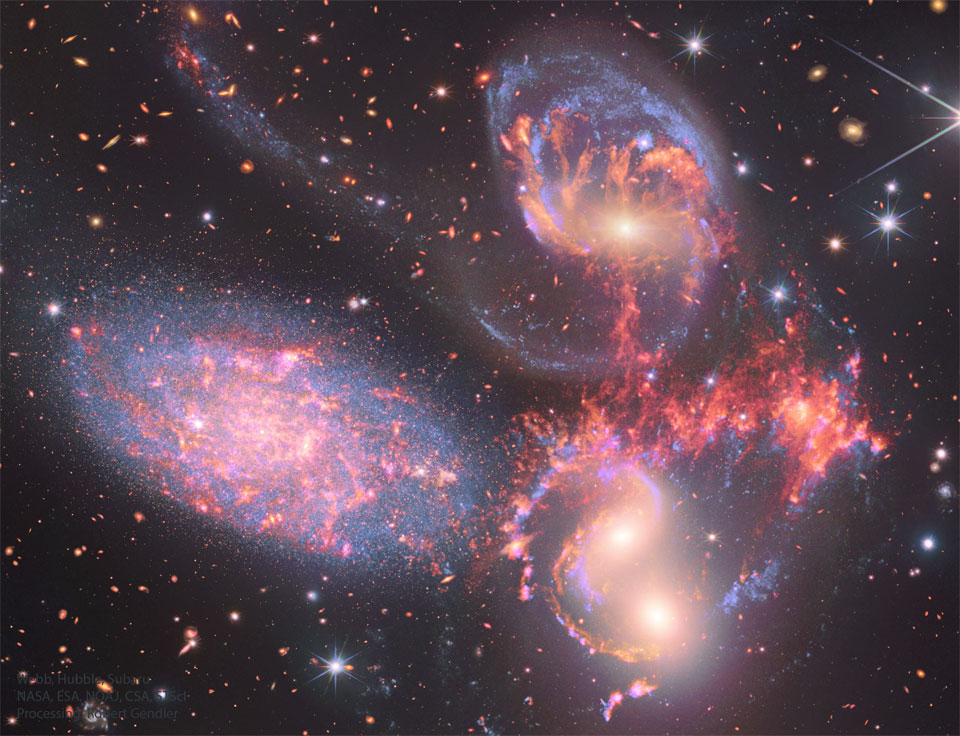2022年7月18日
Stephan’s Quintet from Webb, Hubble, and Subaru
Image Credit: Webb, Hubble, Subaru; NASA, ESA, CSA, NOAJ, STScI; Processing & Copyright: Robert Gendler
Explanation: OK, but why can’t you combine images from Webb and Hubble? You can, and today’s featured image shows one impressive result. Although the recently launched James Webb Space Telescope (Webb) has a larger mirror than Hubble, it specializes in infrared light and can’t see blue — only up to about orange. Conversely, the Hubble Space Telescope (Hubble) has a smaller mirror than Webb and can’t see as far into the infrared as Webb, but can image not only blue light but even ultraviolet. Therefore, Webb and Hubble data can be combined to create images across a wider variety of colors. The featured image of four galaxies from Stephan’s Quintet shows Webb images as red and also includes images taken by Japan’s ground-based Subaru telescope in Hawaii. Because image data for Webb, Hubble, and Subaru are made freely available, anyone around the world can process it themselves, and even create intriguing and scientifically useful multi-observatory montages.
Stephan’s Quintet from just: Webb, Hubble
Tomorrow’s picture: half star cluster
韦伯、哈伯与昴星团的斯蒂芬五重星系
影像提供: Webb, Hubble, Subaru; NASA, ESA, NOAJ; 影像处理与版权: Robert Gendler
说明: 好吧,但你为什么不能整合韦伯和哈伯的影像呢?其实是可以的,今天的主题影像就呈现了令人印象深刻的成果之一。尽管最近发射的韦伯太空望远镜(Webb)拥有比哈伯大的主镜,但它专注于红外光观测,至多大约只能侦测到橙光,见不到蓝光。相反的,哈伯太空望远镜的主镜比韦伯小,不像韦伯能观测远红外光,却可以进行蓝光、甚至紫外光成像。也因此,整合韦伯和哈伯数据可以建构出较宽色彩范围的影像。在这幅呈现斯蒂芬五重星系其中4个星系的主题影像里,红色数据来自韦伯,此外也整合了座落在夏威夷的日本昴星团望远镜的地面影像。因为韦伯、哈伯和昴星团望远镜的影像数据,都是对大众公开的免费资源,所以世界各地的任何人都可以自行处理这些数据,甚至创造出有趣且具有科学价值的多观测平台剪辑影像。
明日的图片: half star cluster



